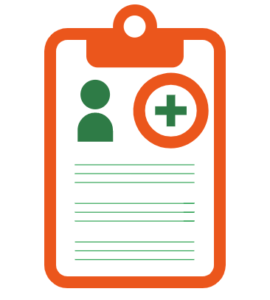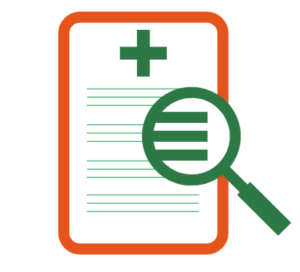
Why Dysport®?
Even the simple things in life, like walking or dressing, can be a struggle when your child has spasticity. Dysport may help reduce muscle stiffness and improve your child’s ability to move the affected limb(s). With effects that can last up to 16 weeks or longer, Dysport can provide relief from muscle stiffness with a chance to receive less injections per year, so your child can spend less time dealing with discomfort and more time participating in the activities they enjoy.

Why Dysport®?
Even the simple things in life, like walking or dressing, can be a struggle when your child has spasticity. Dysport may help reduce muscle stiffness and improve your child’s ability to move the affected limb(s). With effects that can last up to 16 weeks or longer, Dysport can provide relief from muscle stiffness with a chance to receive less injections per year, so your child can spend less time dealing with discomfort and more time participating in the activities they enjoy.

Annika and Wendi are an actual patient and caregiver sharing their real stories. Annika and Wendi have been compensated to share their experiences.
Patient experience
“[After treatment,] she starts walking better, as in tripping less. Then slowly she starts tightening up again and luckily it’s time to go back in before it gets unmanageable.” Wendi
“My doctor gives me the Dysport and then she checks my flexibility about 6 weeks later. I get my injection about every 4 months.” Annika
How Dysport works
How Dysport works
Dysport helps to temporarily block signals from the brain from reaching the affected muscles. By blocking these signals, Dysport prevents the brain from telling the muscles to become too tight or stiff.
Without receiving those signals, the muscles are weakened and symptoms are reduced for up to 16 to 22 weeks and sometimes longer.
Longer relief from symptoms of spasticity could mean fewer injection sessions for your child.
Clinical Trials
In 2 separate studies for children, Dysport was found to be effective for the majority of children.
The upper limb study (2014–2018)
A total of 210 children with upper limb spasticity participated in this study. All of them received Dysport, and they were divided evenly into 3 groups of 70. The first group was given a high dose of Dysport, the second group was given a medium dose, and the third group was given a low dose. After the first injection, doctors measured the reduction in upper limb stiffness at 1.5 months and recorded their overall impression of how each child responded to treatment. They recorded their overall impression again after 16 weeks.
Results
In the upper limb study, the patients with the longest-lasting results were those who received the high dose of Dysport. Most patients got another injection 22 weeks after their first injection, and some patients’ results lasted for up to a year.
The lower limb study (2011–2014)
A total of 235 children with lower limb spasticity participated in this study. Dysport was given to 158 children, and 77 were given a placebo. After the first injection, doctors measured the reduction in lower limb stiffness at 4 weeks and recorded their overall impression of how each child responded to treatment. They recorded their overall impression again after 12 weeks.
Results
In the lower limb study, most patients’ results lasted for at least 16 weeks after their first injection, and some patients saw the effects lasting for as long as 24 to 28 weeks.
Safety & Side Effects
Dysport safety and side effects
Recognize possible side effects—and know what to do about them.
The most common side effects of Dysport in children (aged 2 years and older) with upper limb spasticity include:
Upper respiratory infection and sore throat
The most common side effects of Dysport in children (aged 2 years and older) with lower limb spasticity include:
Upper respiratory infection
Stuffy or runny nose and sore throat
Cough and fever
It’s important to understand how any medicine may affect your child
While you and your child’s doctor are considering treatment with Dysport, make sure to discuss possible common and serious side effects. Tell the doctor about any side effect that bothers your child or that does not go away. These are not all the possible side effects of Dysport. For more information, ask your doctor or pharmacist or read the Full Prescribing Information. You are encouraged to report negative side effects of prescription drugs to the FDA. Visit www.fda.gov/medwatch or call 1-800-FDA-1088.
The most important safety information you should know about Dysport
Dysport may cause serious side effects, including problems breathing or swallowing and/or spread of toxin effects, that can be life threatening and death can happen as a complication. These problems can happen within hours, or days to weeks after an injection of Dysport.
Who should not take Dysport
Your child should not take Dysport if he or she is allergic to Dysport or any of the ingredients in
Dysport (See Medication Guide for ingredients), or is allergic to cow’s milk protein; has had an allergic reaction to any other botulinum toxin products, such as Myobloc® (rimabotulinumtoxinB), Botox® (onabotulinumtoxinA), or Xeomin® (incobotulinumtoxinA)*; or has a skin infection at the planned injection site.
A History of FDA Approval
Duration of FDA approval is not intended to imply superiority in efficacy or safety of Dysport
Discussing Dysport with Your Doctor
Talk with your child's doctor about Dysport
Important questions to ask about Dysport treatment

Remember, your child’s doctor is your best source of information about spasticity and treatment with Dysport. Whether your child has just been diagnosed or you are looking to start treatment, you probably have a lot of questions. Here are a few you may want to ask to get the conversation started:
- What results can I expect with Dysport injections?
- How long do results typically last?
- What side effects should I know about?
- When do I schedule another treatment appointment?
- What is the injection experience like?
- What treatment goals should I set for my child?
Your child’s medical history

Before your child starts treatment with Dysport, you should tell the doctor about all of your child’s medical conditions, especially any that may affect their muscles and nerves (such as amyotrophic lateral sclerosis [ALS], or Lou Gehrig’s disease; myasthenia gravis; or Lambert-Eaton syndrome). Your child may be at increased risk of serious side effects, including difficulty swallowing or breathing.
You should also inform your child’s doctor of all other medical conditions, including if your child has or has had:
- Any problems breathing, swallowing, or bleeding
- A slow or irregular heartbeat or rhythm
- Diabetes
- Any side effect or allergy to any botulinum toxin product
Also, let the doctor know if your child:
- Will be having surgery
- Is pregnant or plans to become pregnant; it is not known if Dysport can harm an unborn baby
- Is breastfeeding or planning to breastfeed; it is not known if Dysport can pass into breast milk
Prior treatment

It is important to inform your child’s doctor if your child has ever received any other botulinum toxin products in the past or had an allergic reaction to Botox (onabotulinumtoxinA), Xeomin (incobotulinumtoxinA), or Myobloc (rimabotulinumtoxinB),* or had treatment with any of these products in the last 4 months.
Also, let your child’s doctor know if your child has recently received an antibiotic by injection or is currently taking any prescription or nonprescription medications, muscle relaxants, sleep medicines, allergy/cold medicines, vitamins, or herbal supplements.
Before your child starts any new medication, be sure to tell the doctor if your child has ever had treatment with Dysport.
Your child can receive treatment with Dysport even if your child has been treated with another botulinum toxin in the past, such as Botox (onabotulinumtoxinA), Xeomin (incobotulinumtoxinA), or Myobloc (rimabotulinumtoxinB).*
Tell your child’s doctor if your child has received any botulinum toxin product in the last 4 months and which product your child received. Your child should not take Dysport if he or she has had any allergic reaction to any of these other botulinum toxin products.
Dysport should be given at least 12 weeks after the last injection. Also inform your child’s doctor if your child is allergic to any of the inactive ingredients in Dysport, including human albumin or cow’s milk protein.
*Botox®, Xeomin®, and Myobloc® are registered trademarks of their respective owners.


